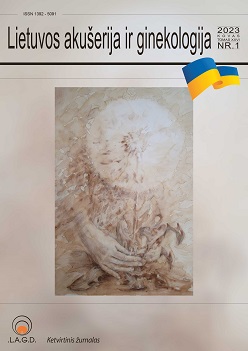PREGNANCY OUTCOMES AFTER ASSISTED REPRODUCTIVE PROCEDURES OUTSIDE THE WOMAN’S BODY. LITERATURE REVIEW
Abstract
Assisted reproductive technologies include all infertility treatment procedures. During the procedure which aims to result in pregnancy, manipulations with germ cells are made outside the human body. Currently, both in Europe and the US, more than 2 % of newborns are born after assisted reproduction procedures. In Lithuania, it is estimated that over 300 newborns each year are born after assisted reproduction procedures. It is considered that the perinatal outcome of pregnancy after assisted reproduction procedure is good if the newborn is born at full-term and of normal birth weight. As the number of such pregnancies increases, more and more studies are being conducted to assess the potential risks to maternal and fetal health. Studies have described complications in both early and late pregnancy which were associated with assisted reproductive technologies, however, research in this area is complicated since it is difficult to differentiate between complications caused by assisted reproductive procedures and multiple other factors such as parental age, environmental factors, etc. This article reviews the scientific literature about pregnancy outcomes after assisted reproductive procedures outside the woman’s body.

